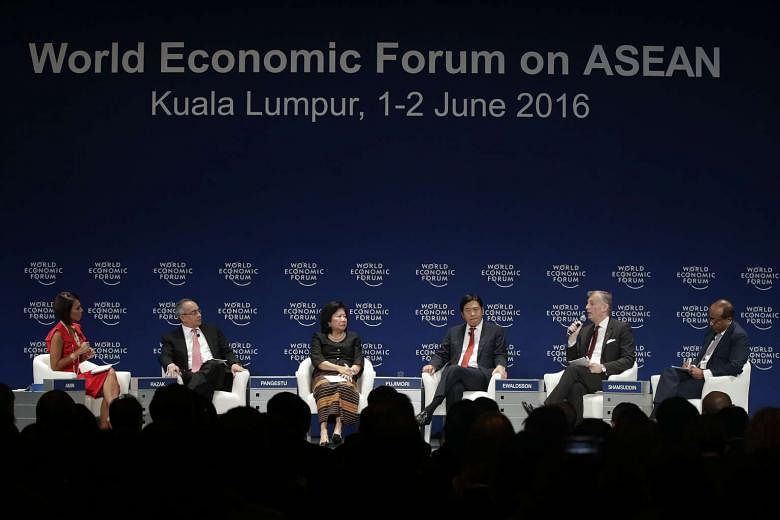KUALA LUMPUR - South-east Asia needs to adapt swiftly to technological developments with governments and corporations working together to avoid stifling the changing regional economy, panelists argued at the World Economic Forum (WEF) on Wednesday (June 1).
The WEF on the Association of South-east Asian Nations (Asean) commenced with speakers urging quick solutions by parties involved and by tapping into the business opportunities that come from the changing technological landscape.
They urged openness and voiced concern over traditional players stifling change by quashing new ventures or technologies.
"Regulators and policymakers are still in the old world whereas the world is already in the new world. We have a tendency to over regulate, control and kill some of the innovative ideas," said Dr Mari Elka Pangestu, Indonesia's former trade minister.
Said Datuk Seri Nazir Razak, chairman of Malaysia's financial group CIMB: "Whether we fulfill our potential would be driven by key factors, one is execution and politics of each country - whether governments invest in the right things. Secondly, it's about how we embrace the technology revolution".
Asean, as the world's seventh largest economy, has a population of more than 600 million. A relatively young region, with a median age of 29, it has charted an average annual growth rate of about 5 per cent. But with the makeup of a vast archipelago and a huge gap in economic development among Asean member nations, the region could lose out if it fails to move effectively as a collective.
"Right now we see this region as 10 different countries, not as Asean… This has to be an attractive market for people to invest and that requires a common system, architecture," said Japan's Lixil Group chief executive Yoshiaki Fujimori.
SapuraKenchana Petroleum's chief executive Shahril Shamsuddin said collaboration is inevitable in the millennial generation with the current behavioural pattern of constant sharing and communicating.
However, solutions to the region's challenges in adapting and nurturing new businesses are not templated.
"There is no one size fits all. It's country specific," said Dr Mari.
Although Asean has attracted investors, in particular manufacturers to pour money into the region with its low labour costs, Lixil Group's Mr Fujimori said now is the time and chance for the region to leapfrog and invest in upmarket technology such as artificial intelligence.
Upskilling, Ms Mari said, is necessary through education - by migrating low and semi-skilled workers to highly skilled workers to be made available to industries. The changes does not signify the culling of jobs, but rather replacing labour with better workers.


